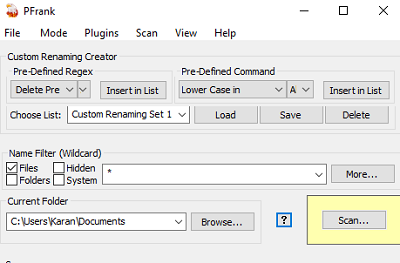

Once there, click File > Open Windows PowerShell, and then click “Open Windows PowerShell.”

The quickest way to open a PowerShell window at your desired location is to first open the folder in File Explorer. While we’ll only scratch the surface of naming your files, you can do some really powerful things, including piping cmdlets together to batch replace characters in a filename. Windows PowerShell is even more powerful and flexible than Command Prompt when it comes to renaming files and folders in a command-line environment. For example, to rename the file “Home Movies.ogv” to “First Birthday.ogv” you would use the following command: ren "Home Movie.ogv" "First Birthday.ogv" Once the file is selected, press F2 to highlight the name of the file.Īlthough the quotes aren’t mandatory, they’re required if either of the current or new names has a space in them. Select a file or folder with the arrow keys, or start typing the name. If you prefer to use a keyboard shortcut, you can use one to highlight a file or folder’s name so you can rename it without using a mouse. With the name of the folder highlighted, start typing out a new name, and press Enter when you finish. To rename a file from the context menu, right-click a folder, and click “Rename” from the context menu that appears. Select the file with a single click, pause for a second, and then click one more time.Īfter the name is highlighted, type out a new name, and press Enter to save the changes. RELATED: How to Show Hidden Files and Folders in Windows Using Two Single Clicks When you’re done typing, press Enter-or just click somewhere else-to save the new name. Once the name is selected-if you’re renaming a file, not the file extension-you can start to type a new name. If you’ve configured File Explorer to show file extensions, make sure only to change the file name. Fire up File Explorer by pressing Windows+E, and navigate to a directory with either a file or folder to rename.Ĭlick on a file or folder to select it, and click “Rename” from the Home menu at the top of File Explorer.


 0 kommentar(er)
0 kommentar(er)
